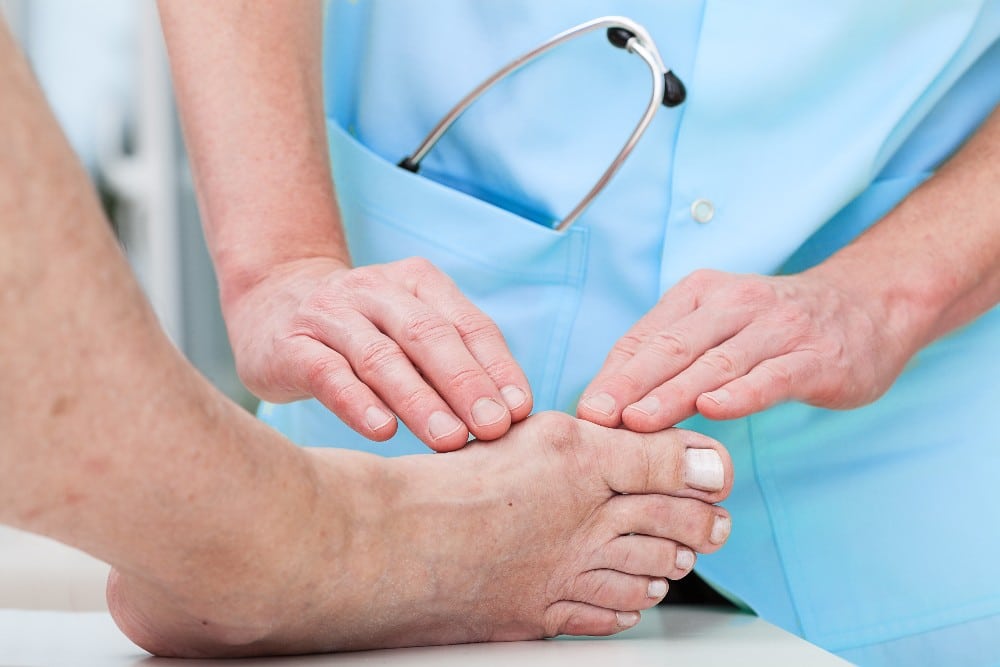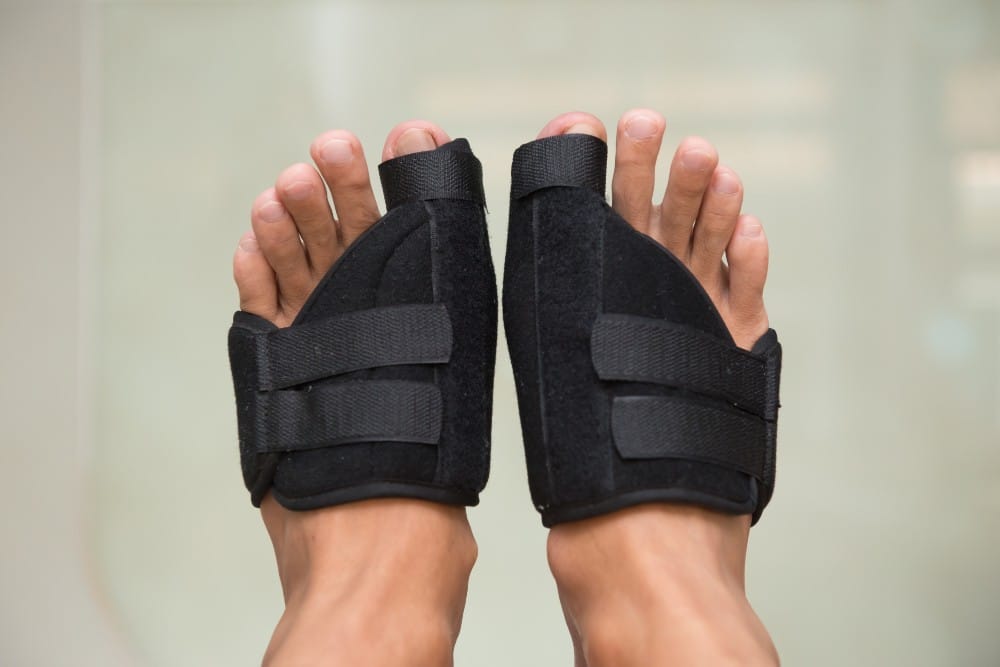Bunions
Have you noticed a bony bump on the joint of your big toe? If so, a bunion could be to blame. At Midwest Podiatry Centers, we see many patients with bunions, and they can occur at any age. This common foot problem is highly treatable, and we are always happy to help develop a personalized treatment plan for new patients.
In this article, we will cover all about bunions, looking into their cause, symptoms, and common treatments.
What is a Bunion?
The medical term for a bunion is hallux valgus. In children, it is known as juvenile hallux valgus. Though it may feel like its own growth, a bunion is actually a misaligned bone. There is nothing inside of a bunion, but it can feel like a bony bump on the base of your big toe.
A tailor’s bunion can form on one or both pinky toes. This case is less common, but bunions are still highly common, affecting 1 in 3 Americans in their lifetime.
What Are the Symptoms of Bunions?
You can tell if you have a bunion by the following symptoms:
- Big toe pain
- A bump protruding from the side of the big toe (or pinky toe)
- Redness and swelling
- Tough skin on the bottom of the foot
- Calluses or corns on the bump
- Limited movement in the big toe that may affect its movement and flexibility
If you notice that the base of your big toe or pinky toe “sticks out” from the rest of your foot, you likely have a bunion.
Meeting with one of our friendly podiatrists can get you an official diagnosis. It is important to get treatment as soon as you can, as bunions tend to worsen over time.
Even if your bunion does not hurt now, it could lead to pain and mobility issues later.
What Are the Causes of Bunions?
Bunions are caused by the bones in the foot falling out of alignment. The bones that make up the metatarsophalangeal joint (MTP) shift out of place, causing the ligaments and tendons connecting them to the bone to force the big toe toward the second toe.
Some people have bunions in their family history. Others may develop them over time by wearing shoes that are too narrow, too tight, or too small.
Some medical conditions, namely arthritis, can also lead to bunions.
Many people will find that bunions occur on their own, and they can simply arise due to the natural shape of your foot.
No matter what the cause, however, bunions are highly treatable, and it is always best to get an appointment with us when you start noticing symptoms. This can prevent the need for surgical correction, unnecessary pain, and foot deformities.
How Do You Treat Bunions?
There are two options for removing bunions. You might have tried to correct them on your own using solutions you found online. Some of these tips are effective, but they may not work for everyone.
If you have not noticed any positive changes to your bunion with self-treatment, our doctors will guide you through other options. Professional advice can correct your bunions, improve your symptoms, and prevent them from worsening.
Non-surgical Treatments
There are many non-surgical options you can try to alleviate bunions. In many cases, using these non-surgical methods alleviates pain and prevents the bunions from worsening.
Some solutions your podiatrist may recommend include:
- Wearing wide shoes
- Using bunion pads or cushions in your shoes
- Wearing a bunion corrector or toe spacer
- Taking medications to reduce pain and swelling
- Applying ice and elevating the foot to ease soreness and minimize swelling
Surgical Interventions
In severe cases, you may need bunion surgery to correct your foot’s bone structure. If you experience chronic foot pain or develop a toe deformity from your bunion, then surgical treatment is likely the best option.
Bunion surgery is called an osteotomy. During bunion surgery, the doctor’s main goal is to realign the MTP joint, alleviate pain, and correct any toe or foot deformities caused by the bunion(s).
Contact Us Today for Help With Bunions
If you’re struggling with bunions, we can help. Please contact us today at Midwest Podiatry to schedule an appointment with one of our expert podiatrists.
You are always welcome to reach out before scheduling an appointment. We are happy to answer your questions and tell you more about our services.


